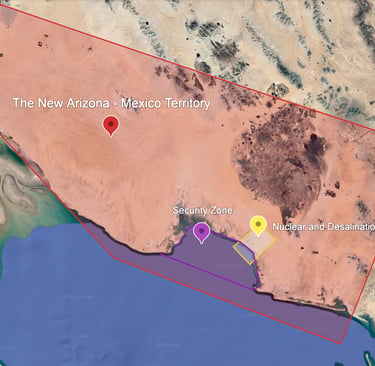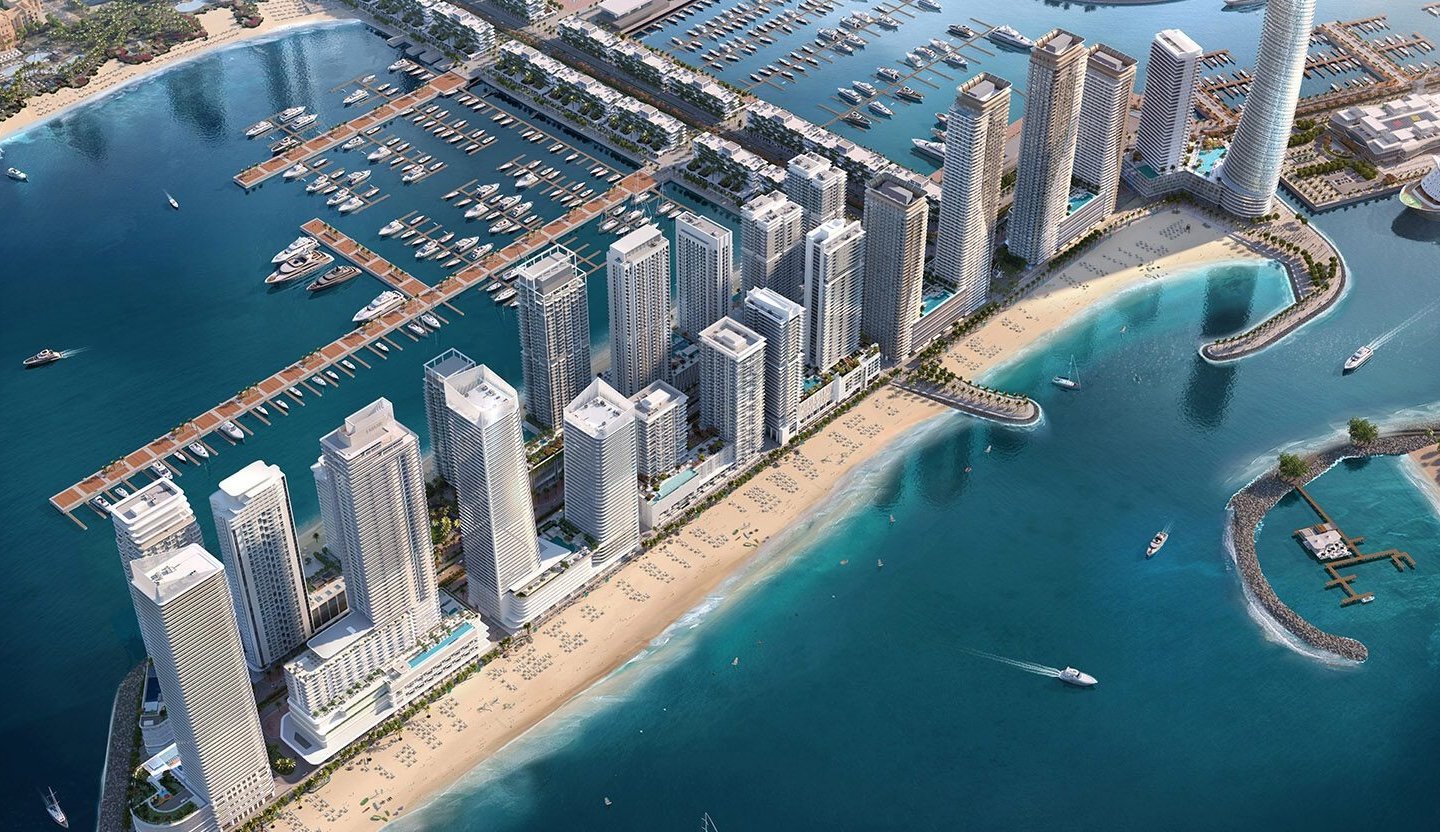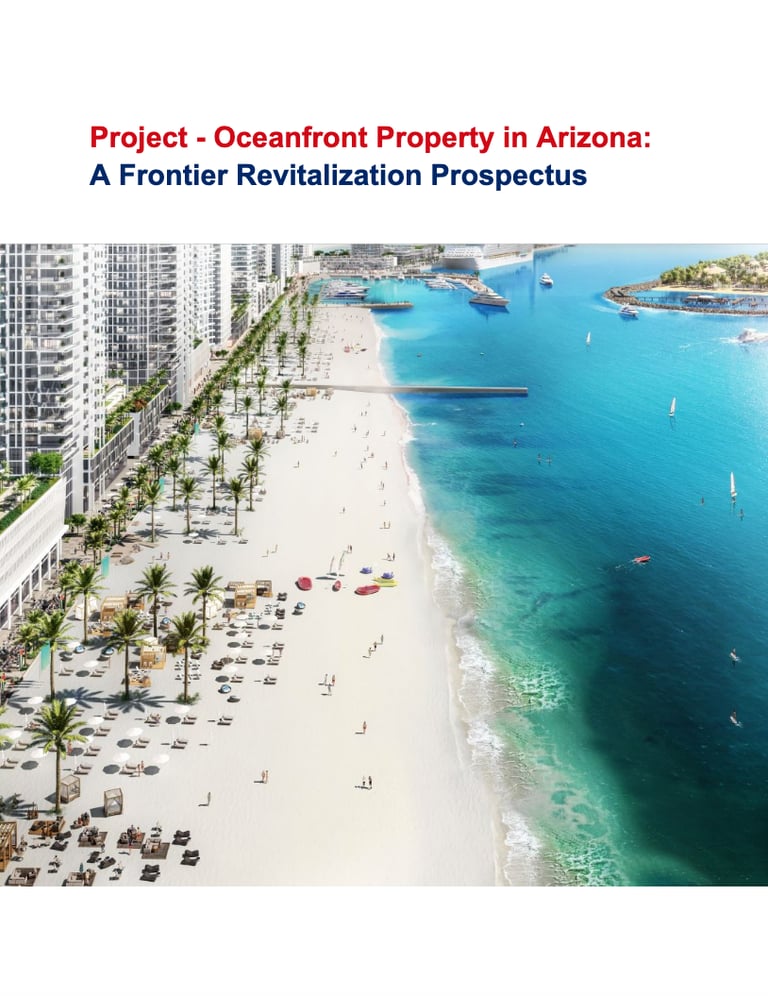Desert to Deepwater: The Arizona Oceanfront Project Charts a Bold Course for the Southwest
How a New Port, Powered by Reactors and Water, Could Turn Arizona into a Global Supply Chain Hub
NEWS
Miranda Morrow
7/20/2025


By Staff Columnist | Miranda Morrow
In a time of water wars, crumbling infrastructure, and geopolitical recalibration, a coalition of visionaries and public policy reformers are proposing a breathtaking counterstroke: the construction of a new oceanfront economic hub in the Sonoran Desert. It’s called the Arizona Oceanfront Plan, and if it sounds like fiction, that’s only because America hasn’t dared to think this big in a generation.
The premise is as striking as it is grounded in engineering reality. A 60-mile-wide strip of currently underutilized Mexican desert, adjacent to Arizona, would become the linchpin in a cross-border revitalization strategy. The land would be jointly administered as a special economic territory, with 20 advanced nuclear reactors powering 40 high-capacity desalination plants. The output? Clean water for the parched interior Southwest, cheap energy for surrounding communities, and a launchpad for economic development not seen since the Hoover Dam.
At the heart of the proposal is an argument as old as the transcontinental railroad: infrastructure precedes prosperity. And in this case, the infrastructure isn’t just functional—it’s transformative.
Bypassing California, Empowering the Interior
California’s ports have long dominated West Coast trade, but the bottlenecks, land costs, environmental lawsuits, and regulatory rigidity have made them an increasingly brittle gateway. The Arizona Oceanfront Plan flips that equation.
With direct pipeline and highway access to Phoenix, Tucson, and beyond, the proposed Arizona–Mexico corridor becomes a high-speed alternative to California’s port congestion. The region would host a modern international shipping hub connected to the Gulf of California, with a bi-national logistics infrastructure optimized for container shipping, intermodal transfer, and advanced manufacturing.
“This is not about replacing California,” says one policy advisor connected to the project. “It’s about giving the interior states their own access to the Pacific trade routes—on their terms.”
From Nuclear Desalination to National Security
The plan borrows its energy model from Canada’s Bruce Power Generating Station, which currently operates multiple nuclear reactors on a single site. The Arizona plan scales this with 20 Gen-IV reactors, many of which could be dual-purpose: providing both electricity and the heat needed for industrial-scale desalination.
Once desalinated, water would be piped to strategic dry lakebeds across Arizona, New Mexico, Utah, Nevada, and Colorado—recharging groundwater tables, irrigating farmland, and stabilizing regional water markets. The grid-scale electricity production could also underwrite a manufacturing boom, including in microchips, EV batteries, and advanced materials.
To protect this infrastructure from bad actors, the plan includes an ambitious security envelope: a joint U.S.–Mexican law enforcement command, biometric border entry protocols, a federally supervised Territorial government, and even discussions of recommissioning three U.S. Navy ships as symbolic and strategic naval guardians in the Gulf of California.
Legal Innovation and Economic Incentives
Governance of the Arizona–Mexico zone would diverge sharply from traditional models. Residents and businesses would pay no property or income taxes. Instead, revenue would be derived from a 15% sales tax split between local and territorial governments, along with excise fees on water, electricity, and ultra-clean transportation fuels exported from the zone.
Critically, individuals—whether American or Mexican—could earn dual citizenship by living peacefully in the Territory for five years. Biometric data would be collected on all new residents to deter cartel infiltration and violent crime.
“This is about creating a merit-based frontier society,” says a legal consultant to the project. “Security, prosperity, and liberty—backed by infrastructure and real consequences.”
Israel’s Desert Playbook and Ohio’s Testbed
One of the project’s proposed international partners is Israel, whose desert agriculture, water reuse, and arid-region planning expertise is seen as a key asset. If the Sonoran corridor can replicate even a fraction of Israel’s greening success, the region could host not only new cities but entirely new economies.
But before construction begins, another state must play its part: Ohio. The plan calls for Ohio to become the proving ground for new reactor technology, including HALEU-fueled molten salt reactors, thorium experiments, and spent nuclear fuel repurposing. Ohio would also test new digital construction methods for printed homes and underground dwellings suitable for desert life.
Once certified and scaled, the Arizona corridor would serve as Phase II, absorbing proven technologies from the Midwest and deploying them on a civilization-altering scale.
A Frontier Reborn
Critics may scoff at the ambition. But advocates point out that every American leap—from the Tennessee Valley Authority to the Apollo Program—began with skeptics and ended with spectacle. The Arizona Oceanfront Plan may never replace the Pacific Coast, but it could make the American interior matter again, not just politically, but economically and strategically.
And in a nation starved for unity, water, and purpose, that just might be the kind of dream worth building.



The Arizona/Mexico Connection
Download the report here!






